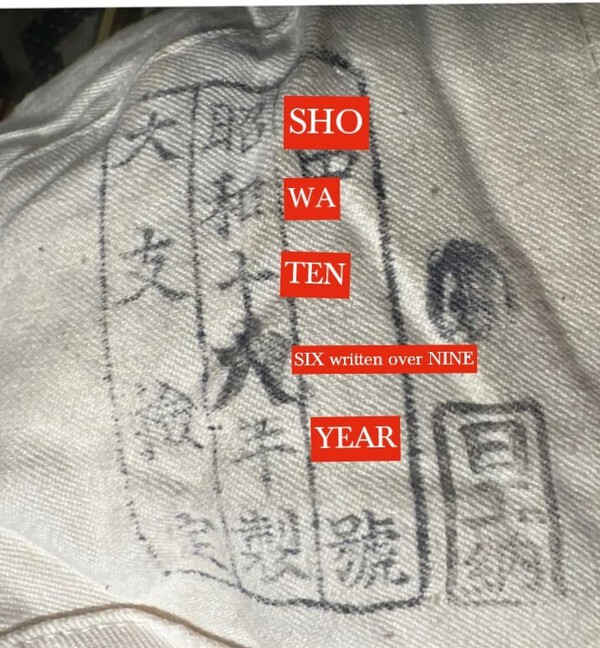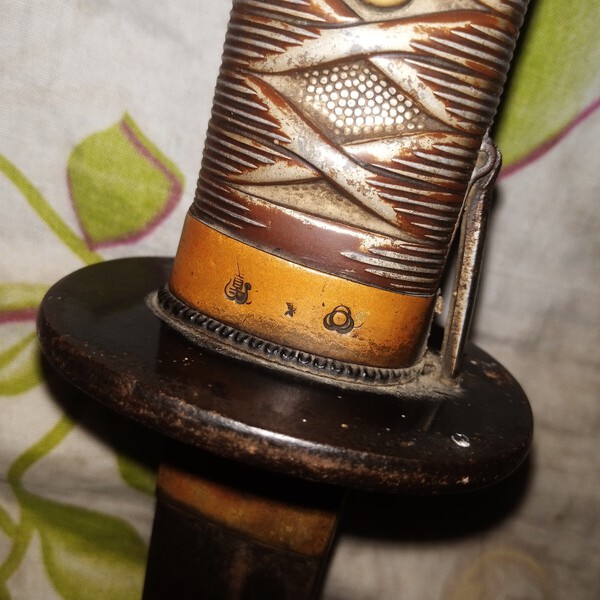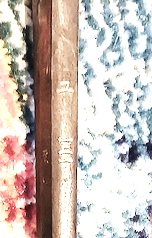-
Posts
13,866 -
Joined
-
Last visited
-
Days Won
169
Content Type
Profiles
Forums
Events
Store
Downloads
Gallery
Everything posted by Bruce Pennington
-

Meiji era cavalry sabers
Bruce Pennington replied to Peter Bleed's topic in Military Swords of Japan
Thank you, Peter. Looking back at Nick Komiya's pages, I see he did an extensive write-up on the 32: How the Type 32 Sword was Born - Nick Komiya, Warrelics. If I were to do anything, it would simply be a condensed version of his work. I tried to find the article you mentioned online, but no success. Probably have to have a subscription. If memory serves me, their mag, "Gun Collector" is the one that published my Souvenir Sword article. Honestly, though, it doesn't seem like they'd publish a second article right on the heels of the first one about the 32. -
As close as you're going to get. Obviously, the coloration of the metal is different, but I've seen gunto like that before. Heck, I owned one for a while.
-
The seki stamp was done side-ways, and only the top half punched in well. Interesting to some of us, the only other Yoshisuke I have, posted by @skip, had the painted number "898" - two blades away from this one in the assembly process! I don't have photos of the fittings, but it would be interesting to find out if it was a kaigunto. Here's his post. Unfortunately, he hasn't been online since 2019:
-
Hi Sam! You've done some good research already. Shimada was his first name, not a location: "YOSHISUKE (義助), Shōwa (昭和, 1926-1989), Gifu – “Yoshisuke” (義助), real name Shimada Ruisuke (島田類助), he was a Seki-based guntō smith" The larger Seki stamp, like yours, was a civilian inspection/acceptance stamp of the Seki Cutlery Manufacturers Association. It was used from 1940 to 1944, with most dated blades made in 1942. So that is your date range. I've personally found that blades with the stamp were very well made, with attractive hamon (temper pattern), but not traditionally made. Marcin's estimated value is probably pretty close to the current market pricing.
-
Hm. Sesko lists two with those kanji, but neither is a Sako: "KANESHIGE (兼茂), Shōwa (昭和, 1926-1989), Chiba – “Shimōsa-jū Moriyama Kaneshige saku” (下総住森山 兼茂), real name Moriyama Osamu (森山修), he has a self-taught smith and worked later as a rikugun-jumei-tōshō, he lived in Shōnan (沼南) in the Higashi-Katsushika district (東葛飾) of Chiba Prefecture (see picture right) KANESHIGE (兼茂), Shōwa (昭和, 1926-1989), Gifu – “Kaneshige” (兼茂), real name Sakai Katsutoshi (酒井勝利), born March 19th 1906, he worked as a guntō smith"
-

Meiji era cavalry sabers
Bruce Pennington replied to Peter Bleed's topic in Military Swords of Japan
Both Dawson and Fuller's books have sections on the 32's. I own one of each model, as do probably most collectors of WWII gunto. I'm sure they can be found in Japan, just as we occasionally see a 95 or officer showato gunto pop up for sale, but they are rare over there, at least publicly. I'm pretty sure we have one or two guys who like to specifically collect them, but I don't recall who it is. You will see a few of them pop up in the auctions each month and/or on ebay, so they are around and can be found. Fewer in numbers than the WWII swords, but not rare. Prices range around $400-600 USD. For dimensions and a better write-up, see Ohmura's page: NCO Gunto Type 32 -

Translate and any idea what it’s is ?
Bruce Pennington replied to KellyAT's topic in Translation Assistance
-
This one started as a Type 95 discussion, but has grown to cover all black-painted gunto
-
-

WWII Japanese Officer's Katana, 兼吉作 (Kaneyoshi saku)
Bruce Pennington replied to yoda's topic in Military Swords of Japan
I, too, have seen an occasional horimono on WWII blades. Kanenobu was RJT qualified, and I have star-stamped blades by him from '42-'45. Any chance there is a star above his mei? Although, without a date, it probably doesn't have a star on second thought. The horimono appears, to me, to be the flaming jewel symbol from Buddhism. I'm no expert on that, though. -
When it comes to kamon on swords, I like to look back at the origin. Certainly there were dozens of families that adopted the symbols of the original samurai, so we can never know who carried it in World War II. So for me, it’s fun to see who the original family was that the WWII carrier adopted.
-
-

Tanto marketed as Pilot Hara-kiri dagger
Bruce Pennington replied to John C's topic in Military Swords of Japan
It's starting to sound like there was a variety of reasons a pilot might have had a tanto in his possession - a gift from a mother (for seppuku), special gift from a unit commander to his favorite pilot, navy-wide practice for good luck, specific Special Attack Unit (Taigi-tai), Army units. Since the tanto was the instrument used in seppuku for the ages, it is easy to see how collectors would latch onto the idea, especially after being mentioned by both Ohmura and Fuller. Eagerly awaiting your article, John. -

Rinji Seishiki Gunto Mei Translation
Bruce Pennington replied to Klink's topic in Military Swords of Japan
Might be your browser. Are you using Microsoft Edge? They give a pop-up window asking if you want to translate. But like you say, sometimes it's not there. However they have a symbol in the search window that, if clicked, brings up the translate pop-up: -

Help with Mei Translation, Comments on Gunto & Hamon
Bruce Pennington replied to Klink's topic in Military Swords of Japan
Wow, you did good, Dean! Care to share how you found a saya that fit? Yes, that retention strap is what you need. I have never personally seen one for sale. -

Tanto marketed as Pilot Hara-kiri dagger
Bruce Pennington replied to John C's topic in Military Swords of Japan
Even this goes along with the Ohmara page saying these were given to kaiten pilots. Great source, thank you for posting! -

Rinji Seishiki Gunto Mei Translation
Bruce Pennington replied to Klink's topic in Military Swords of Japan
This is the English page for the main page: Ohmura Site. Some of his pages aren't available in English and must be translated. Some, when entering in Japanese, have a link to click at the bottom of the page for English Version. -
Good point, Malcolm! But, just as confusing! Mei side looks like 121, while the date side looks like 13. Would be nice to know if the seppa are stamped with the number.
-

Rinji Seishiki Gunto Mei Translation
Bruce Pennington replied to Klink's topic in Military Swords of Japan
Did a quick scan. June '45 was the latest I have in the charts: 3 x Yoshitada 1 Kiyotsugu 1 Masatsugu 1 Tadamori I didn't see any later than that. Keep in mind, though, my chart is only stamped blades. There very well could be later blades out there, just without stamps. -

Rinji Seishiki Gunto Mei Translation
Bruce Pennington replied to Klink's topic in Military Swords of Japan
I don't recall where to find the discussion, but Nick Komiya at Warrelics had said that there was a concerted effort to transfer and transport sword making machinery over to Manchuria and/or Korea as their factories were being destroyed by the bombing. According to him, they never got fully operational from the attempted move. -
Thanks, Trystan. I see now.
-
Here's one posted by @Eric_P. Eric, what kind of blade was in this?
-

Check out these 'gems'
Bruce Pennington replied to John C's topic in Auctions and Online Sales or Sellers
-
Katakana "YU". Are the numbers "12" or "31" ? Hard to see exactly. Edit: The more I look at it, the more it looks like 31
















